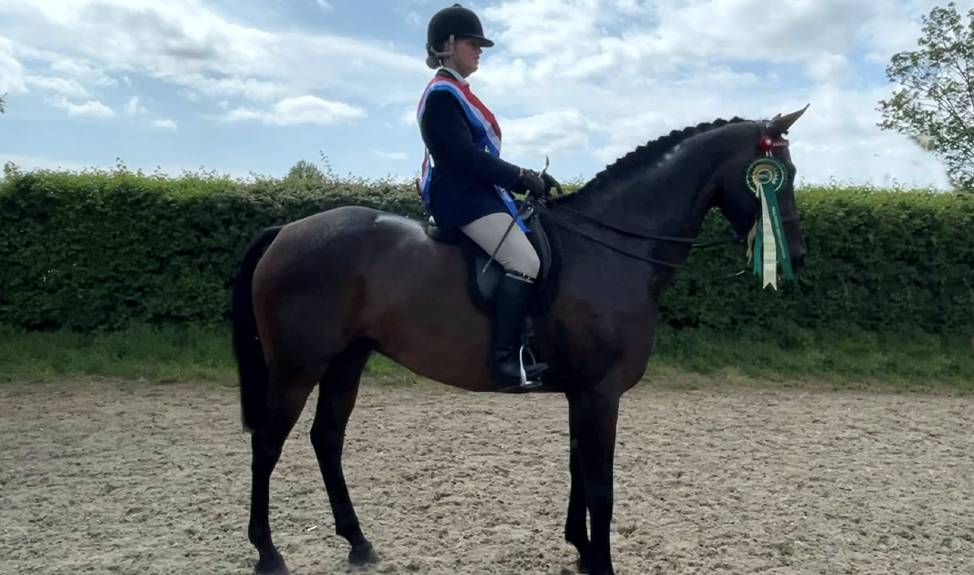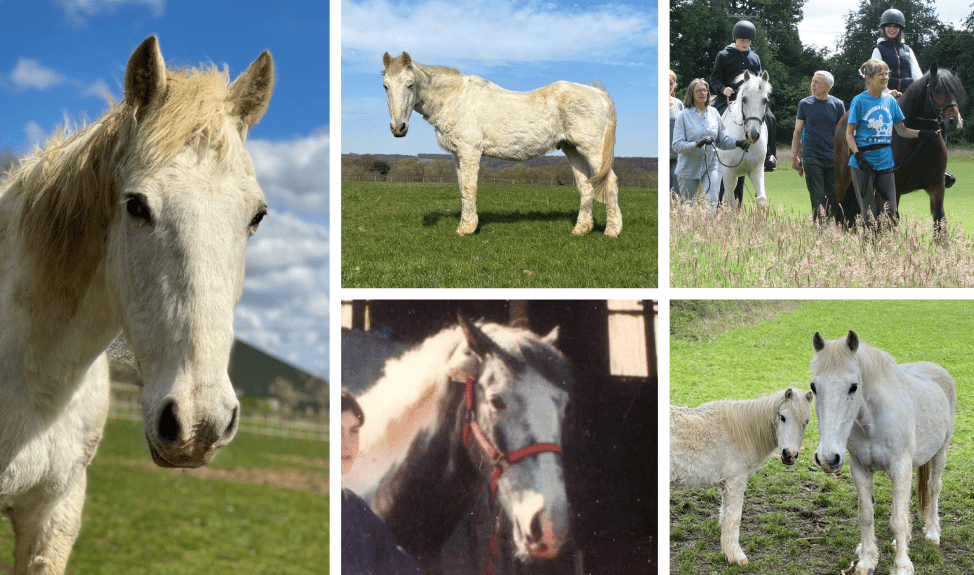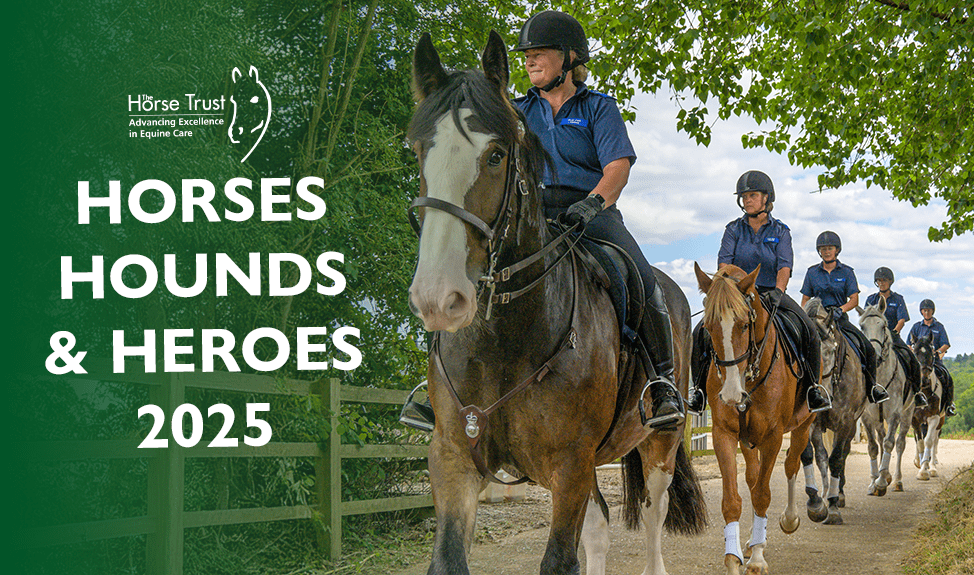It is with deep love and gratitude that we remember the life of Stanley, a…

Condition Scoring Show Horses
Guest Post by Behavioural Scientist Dr Tamzin Furtado.
What did I learn from condition scoring 300+ show horses and ponies at RIHS?
We’ve probably all heard it said that show judges like fat horses, and that show horses, therefore, need to be presented with plenty of padding in order to have a chance of winning. I was lucky to be invited by the National Showing Council’s chairman David Ingle to attend the Royal International Horse Show at Hickstead (RIHS) to investigate whether this was true. As a non-showing person (my first pony used to lie down in the ring, putting me off for life!) I was unsure what to expect – and, I’ll admit, slightly scared of offending the judges, who would surely think we were criticising their years of experience.
We were condition scoring all the horses across 12 classes, and giving an award in each class for the healthiest weight – that is, the middle of the condition scoring scale. Because of Covid and equine Flu, we did not touch horses (ideally, you get your hands involved for condition scoring) but instead used a visual impression. The 0-5 score was used, with 0 being emaciated and 5 being obese. Ideal weight horses are commonly considered to be between 2.5-3; ribs covered but easy to feel, and no excess fat present across the body.
Throughout the two days, I condition scored over 300 horses, ranging from Shetlands to maxicobs, across a range of classes. I was delighted to be accompanied by Lily Edginton from Sussex Equine Hospital on Saturday morning. Our team also spoke extensively with over 20 judges, stewards, and of course, competitors and grooms. So, what did we find? We’ll share our views of the things people commonly say about showing, and our findings:
- All show horses and ponies are fat: We found this to be a MYTH. Some classes definitely had trends towards the upper ends of the condition scoring scale (notably the smaller pony classes and maxi cobs) but the average weight seemed to relate to the specific class rather than just being a showing issue per se. Some classes, such as the hunter and hack classes, had many horses who were between a healthy 3-3.5. It seemed, therefore, that people were aiming for bodyweight based on the class they wished to enter, rather than excess weight being a pervasive factor in every class. This is good news, because it means we can target the areas where change is needed.
- Show judges prefer fat horses: We found this to be a MYTH. In fact, in one instance, the horse that we rated as the healthiest condition was not only the class winner, but also took the section championship. Horses that we considered an ideal weight were placed somewhere in the line-up in several different instances. Judges repeatedly told us how they removed marks for overweight horses (though it is not clear how overweight horses had to be for this to happen) – but as marks are not fed back to competitors, the competitors did not necessarily know that.
However, there were also times where overweight horses were placed high up; my understanding from the two days was that they were placed in spite of their weight rather than because of it. Judges said it was hard to differentiate between a horse who was ideal in all other ways but overweight, versus a horse who was a better weight but placed lower for other factors.
3. Professional producers have overweight horses: MYTH. Actually, several of the professional producers were the ones who had the healthiest weight horses, or horses we put in the top 3 healthiest condition. Possibly this indicates that the professionals have noticed that times are changing in the world of showing, and are producing their horses appropriately.
One thing that really stood out to me was that there was a real vicious circle happening: competitors thought that fat horses were preferred by judges, so competitors told us they felt pressure to prepare their show horses as overweight. As a result, judges were presented (in some classes) with a line of heavier horses, which they had to choose between – meaning that they placed overweight horses, and competitors thought that they had done the right thing for preparing their horses with excess weight.
I have heard people say that horses should simply be unplaced, or even eliminated, if they are overweight. I understand this view, but was interested to explore the judge’s experience at RIHS. As an unashamedly showing-naive person, I was amazed by the incredible range of things judges have to consider at any one time. Standing alongside judges who were differentiating between 25 similar, shiny bay/chestnut bottoms, it was illuminating hearing the vast array of things that are being taken into account. Limb straightness, turnout, riding style, obedience, the odd splint, muscle tone, overall picture, “sparkle” – even with the best will in the world, marking horses down on weight is only one small component amongst a huge array of factors, so I could understand how a horse could still have won a class, even if he or she was overweight. Unfortunately, eliminating based on weight would be a huge political issue, as judges felt that they might not be invited to judge again; this was particularly problematic in classes where a large proportion of horses were overweight. Also, deciding at what point overweight becomes a welfare issue worthy of elimination was problematic.
All this is not to say that there is no issue with weight in showing. The proportion of overweight horses across the board was high (even higher than the prevalence in the general population, which is already worrying). Change is needed, given that obesity is one of the biggest welfare issues in the UK. However, as someone who went in with little knowledge of showing, I came away feeling like there was hope. Every steward and judge I spoke to was delighted to hear about the healthiest condition awards, welcoming us with open arms and openly sharing their experience and views about the need for change. All equine sports have their welfare issues, and showing is aware of this one, and keen to change.
So, my message to competitors based on this experience is: don’t be afraid to present your horse at the weight you know to be healthy. While we do sometimes hear worrying stories of judges asking for more weight on horses, we know that times are changing, and the majority of judges and stewards will be happy to see your horse healthy, rather than fat.















Comments (0)